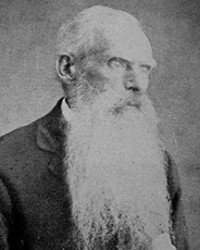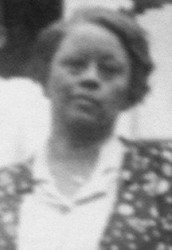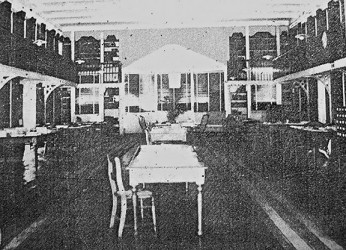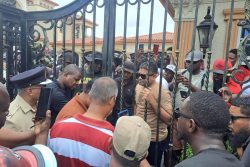By Clive W McWatt
Clive Wayne McWatt was born in Guyana in 1946. He left in 1963 to continue studies in the UK. After postgraduate studies in Library and Information Science he joined the Shell Group Companies as Librarian, Shell Centre London and Information Manager. After a varied career with Shell he is now retired and lives in London.
Five years ago The National Library of Guyana celebrated its centenary having opened its doors to the public in 1909 as the Carnegie Public Free Library. But let it not be forgotten that there were already in existence private libraries in Guyana dating back to the 19th century. One ‘other’ library of great significance was that of the Royal Agricultural and Commercial Society (RA&CS) which by 1909 had already celebrated its Diamond Jubilee.
The RA&CS was founded in Georgetown in 1844 and occupied one of the city’s prime sites on Company Path extending from High Street to Water Street. The Society became the focus for intellectual, scientific, commercial and cultural life for the planters and the elite in British Guiana, and one of the Society’s founding objects was the establishment of a Reading Room and Library for its members.

The first Reading Room was entirely destroyed by fire in 1864 and was later rebuilt in 1865. The new Reading Room and Library were considered to be the largest in the West Indies and were furnished with comfortable armchairs and writing tables and books of reference. The well-stocked library had over 30,000 volumes that were of great importance to the country. Special attention was paid to the acquisition of local literature with a view to obtaining everything that was published on British Guiana; many of the items were scarce and not procurable anywhere in the colony. There were ongoing debates about the acquisition of ‘light’ literature as apposed to enlightened literature such as poetry and ‘worthy’ novels. Had these library collections been spared the conflagrations of 1864 and 1945 which twice decimated the RA&CS premises in Georgetown, Guyana may have inherited an even greater bibliographic legacy.

At the time when Miss Emily Murray became the first Public Librarian in 1909, the RA&CS was privileged to have the eminent Mr James Rodway as its Honorary Librarian. Rodway the writer, historian and bibliophile, devoted many years of his life to the Society as Curator, Secretary, Editor and Librarian, until his death in 1926. The post of Librarian then fell to the indomitable Miss Eloise Sharples who was succeeded by Miss T Schultz in 1939 and in the RA&CS’s latter years by Miss Nellie Martins.
The establishment of the Carnegie Free Library, free at the point of use, threatened the active support for the RA&CS Library. By the end of 1910 the RA&CS had lost over 300 members. In its desire to maintain the prestige it had acquired as the leading library institution of its kind, it looked towards members for financial support through subscriptions, and appealed to their civic obligation to support it as a public and historic institution. The Society’s library was bound up with rules and privileges which were gradually extended to lady subscribers who were enticed to use the cool and comfortable reading rooms as a resting place during intervals from shopping in the city.
Sir Crossley T Rayner in his presidential address to the RA&CS meeting in January 1914 acknowledged the Carnegie Free library as “an admirably conducted institution which calls for the highest praise of those who administer it …” He recommended that the Society’s library should be run on the same basis as the Free Library. Yet compared with the Public Free Library, the RA&CS had attractions which were not generally known. Their list of periodicals was much longer; the Reading Rooms opened every day including Sundays and holidays; there were generous book and periodical loans, a reference service and collections of books for young people.
The upkeep of the RA&CS Museum collection, which opened to the public in 1870, continued to be subsidised by the government until 1934. Owing to the Society’s financial stringency, the museum was handed over to the government on perpetual loan.

The Carnegie Corporation made a grant to build a second storey on the wings of the Georgetown Public Free Library for the purpose of exhibiting the museum’s collections and the Carnegie Library building became the home for the RA&CS collection in 1936. It was good fortune that the museum collection, while housed in the Carnegie Library, was saved from the fire which destroyed the RA&CS buildings in February 1945. In 1951 the museum collection was returned to the RA&CS newly built premises which was designed to incorporate the RA&CS collection and the Natural History Collection which have become the Guyana National Museum.

The RA&CS Library, while continuing to serve the interest of the Society and its subscribing members, not only fulfilled its role as a special library of a learned society, but also served as a resource for local historical and literary studies and an auxiliary to the Public Library Service. In the post-war years during the 1950s, with impetus from the British Council, the RA&CS and the Public Free Library became outlets for cultural activity in Guyana. The Public Library services were extended to rural areas and both institutions embarked on a programme of public lectures and exhibitions while continuing to satisfy the reading public.
In 1972 the RA&CS relinquished its Royal patronage and devolved to become the Guyana Society. With the demise of the latter institution in 1975, its library was closed and its remaining book collection was given for the most part to the National Library of Guyana. Second copies of works went to the University of Guyana Library, along with the small collection of local works in a special cabinet which was held on behalf of the Union of Cultural Clubs, long since defunct. It was N E Cameron, one of the few surviving former members, who requested that this important little collection should go to the university and not the National Library, and it found its new home, therefore, in the Caribbean Research Library.
The Guyana Society Collection which is now held by the National Library, comprises that portion of the former Guyana Society Library which contains many rare and important historical works on Guyana and the West Indies. The National Library has the responsibility for the custody and preservation of the former Society’s historical books and Timehri journals which are the core of Guyana’s historical bibliography.
Today the only visible reminder of the Royal Agricultural and Commercial Society’s existence in Georgetown is the large letters ‘RACS’ engraved in relief over the entrance to the old Reading Room building of 1951 which within recent times, accommodated the National Archives Newspaper Library.
Over the past century Andrew Carnegie’s gift of a public library remains an enduring legacy for the people of Guyana; the library achieved centennial status in 2009 and grew to outlive its former neighbour and rival – that ‘other’ library. Nevertheless, the RA&CS Library and Reading Room, even though it may have been considered by some to have been an elitist institution, did play a prominent role in facilitating the intellectual and cultural life in Georgetown for well over a century.







